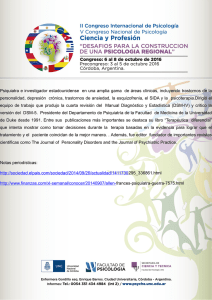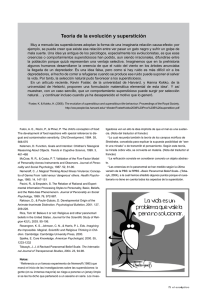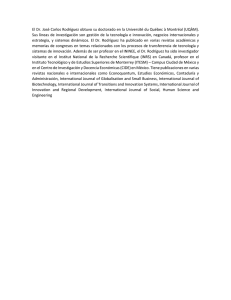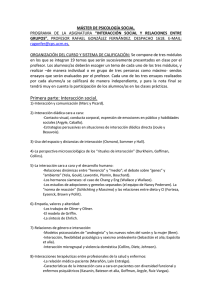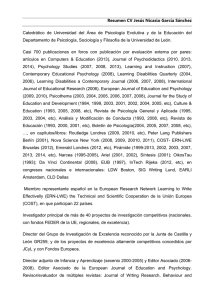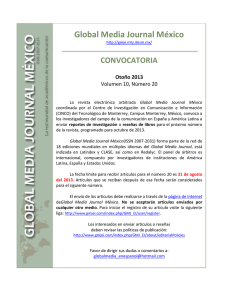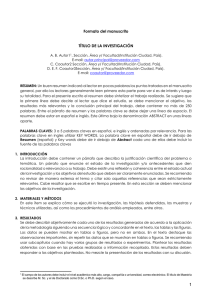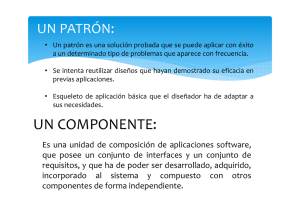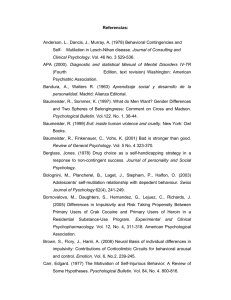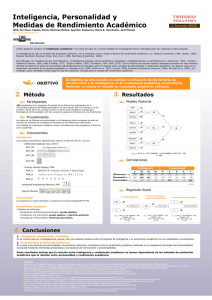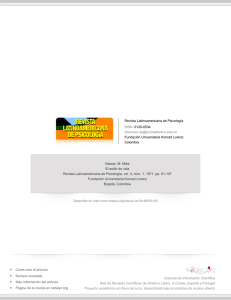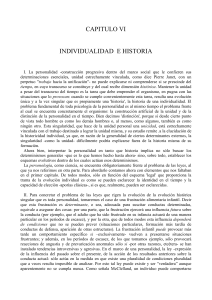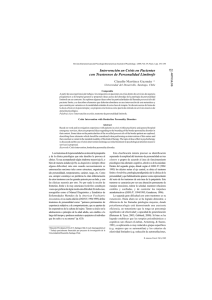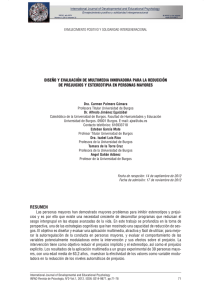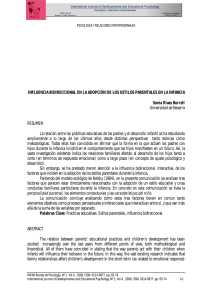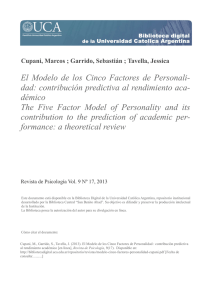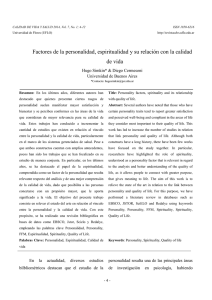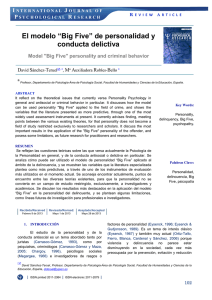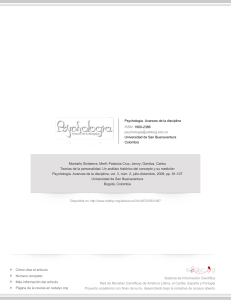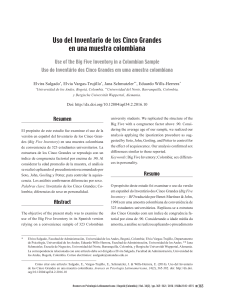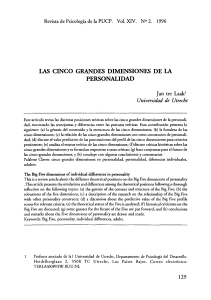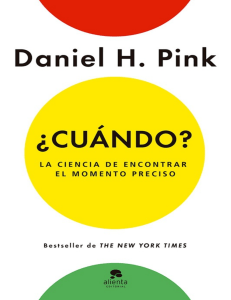en otra ventana
Anuncio
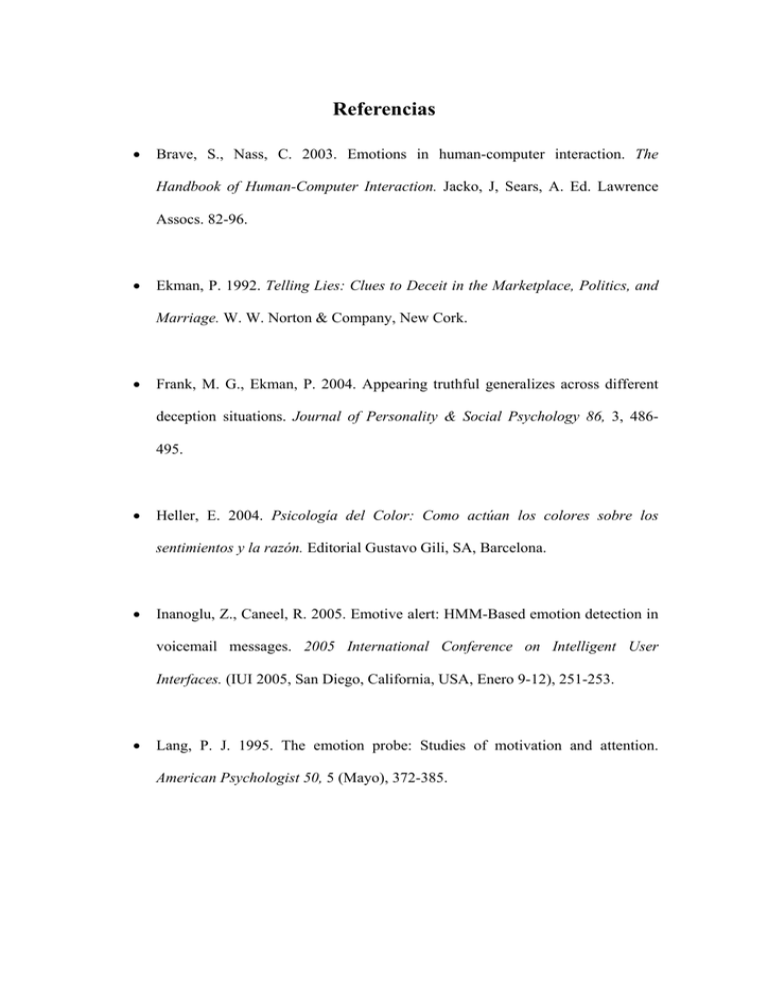
Referencias • Brave, S., Nass, C. 2003. Emotions in human-computer interaction. The Handbook of Human-Computer Interaction. Jacko, J, Sears, A. Ed. Lawrence Assocs. 82-96. • Ekman, P. 1992. Telling Lies: Clues to Deceit in the Marketplace, Politics, and Marriage. W. W. Norton & Company, New Cork. • Frank, M. G., Ekman, P. 2004. Appearing truthful generalizes across different deception situations. Journal of Personality & Social Psychology 86, 3, 486495. • Heller, E. 2004. Psicología del Color: Como actúan los colores sobre los sentimientos y la razón. Editorial Gustavo Gili, SA, Barcelona. • Inanoglu, Z., Caneel, R. 2005. Emotive alert: HMM-Based emotion detection in voicemail messages. 2005 International Conference on Intelligent User Interfaces. (IUI 2005, San Diego, California, USA, Enero 9-12), 251-253. • Lang, P. J. 1995. The emotion probe: Studies of motivation and attention. American Psychologist 50, 5 (Mayo), 372-385. • Liu, H., Lieberman, H., Selker, T. 2003. A model of textual affect sensing using real-world knowledge. 2003 International Conference on Intelligent User Interfaces. (IUI 2003, Miami, Florida, USA, Enero 12-15), 125-132. • Matsumoto, D., Ekman, P. 2004. The relationship among expressions, labels, and descriptions of contempt. Journal of Personality & Social Psychology 87, 4, 529-540. • Ortony, A., Clore, G., Collins, A. 1988. The Cognitive Structure Of Emotions. Cambridge University Press, Cambridge. • Palacio, J. C. 2004. ChatLang: interfaces afectivas síncronas. Tesis Licenciatura. Depto. de Ingeniería en Sistemas Computacionales, Escuela de Ingeniería, Universidad de las Américas-Puebla, Diciembre. • Picard, R. W. 1997. Affective Computing. The MIT Press, London, England. • Reeve, J. 1992. Understanding Motivation and Emotion. Harcourt Brace Jovanovich College Publishers, Fort Worth. • Rogondino, M. 1990. Computer Color: 10,000 computer-generated process colors. Chronicle Books, San Francisco. 86 • Russell, J. A, Weiss, A., Mendelsohn, G. A. 1989. Affect grid: a single-item scale of pleasure and arousal. Journal of Personality & Social Psychology 57, 3 (Sept.), 493-502. • Russell, J. A. 1980. A circumplex model of affect. Journal of Personality & Social Psychology 39, 1-sup-6 (Dic.), 1161-1178. • Russell, J. A., Lewicka, M., Niit, T. 1989. A cross-cultural study of a circumplex model of affect. Journal of Personality & Social Psychology 57, 5 (Nov.), 848856. • Sánchez, J. A., Kirschning, I., Palacio, J. C., Ostrósvskaya, Y. 2005. Towards mood-oriented interfaces for synchronous interaction. Second Latin American Conference on Human-Computer Interaction (CLIHC 2005, Cuernavaca, México, Oct. 23-26). • Schiano, D. J., Ehrlich, S. M., Sheridan, K. 2004. Categorical Imperative Not: Facial affect is Perceived Continuously. • Tecuanhuehue Calderón, B. L. 2004. Interfaces afectivas en el contexto de Bibliotecas Digitales U_DL_A. Tesis Licenciatura. Depto. de Ingeniería en Sistemas Computacionales, Escuela de Ingeniería, Universidad de las AméricasPuebla, Mayo. 87 • Wang, H., Prendinger, H., Igarashi, T. 2004. Communicating emotions in online chat using physiological sensors and animated text. (CHI 2004, Vienna, Austria, Abril 24-29), 1171-1174. • Whelan, B. M. 1994. La armonía en el color: Nuevas Tendencias. Somohano, México. • Wong, W. 1992. Principios del diseño en color. Ediciones G. Pili, S. A de C.V, México. • Yik, M. S. M., Russell, J. A., Oceja, L. V., Fernandez, J. M. 2000. Momentary affect in spanish: scales, structure, and relationship to personality. European Journal of Psychological Assessment 16, 3, 160-176. 88
